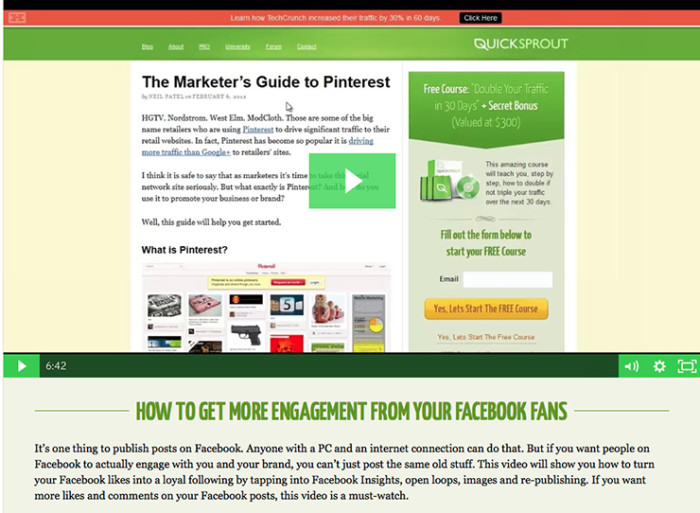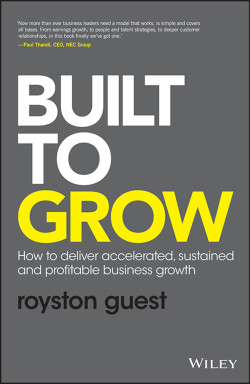There was a day when brands controlled their marketing messages. Not any more. Your marketing is being done for you, even while you sleep. That makes for a very exciting world, a new world and from a marketing perspective. How will you make it work for you?
Author Royston Guest tells how to harness the commentary on social media and encourage your customers to become your sales force and your champions.
If there has been one significant change to the way in which people and brands interact over the past decade, it’s social media. The impact of social media has been massive and has brought about such disruptive change, that you might well have missed the full scope of it. If Facebook were a country, it would be the third largest one on the planet today, smaller only than China and India in terms of population . . . and not smaller by much. It carries more traffic than Google in the United States and almost 50% of the mobile internet traffic in the UK is Facebook.
However, that isn’t just an interesting fact; for companies wishing to keep control of their brand reputation and generate interest in their products and services, it is both a warning and an opportunity. Since 90% of consumers today trust peer recommendations and only 14% trust your painstakingly developed advertising, this puts substantial power into the hands of the people you’re trying to reach. Combine that preference for peer recommendations with the vast number of people on Facebook and you have to ask yourself: are you happy with what they are saying about you?
Those everyday people conversations are taking place all over: 34% of bloggers review products and more than 24 hours of video is uploaded to YouTube every minute of every day, much of it talking about brands and products, starting and spreading rumours and creating brand-related commentary.
There was a day when brands controlled their marketing messages. Not any more. Your marketing is being done for you, even while you sleep. That makes for a very exciting world, a new world and from a marketing perspective. How will you make it work for you?
The BIG Idea for your sales force: The Customer Buying Zone and Four States of Mind
One of the main responsibilities of any marketing function is to generate awareness and leads – more importantly, the right type of leads, which will convert. The Customer Buying Zone identifies four states of mind a potential customer will move through en route to making a purchasing decision. In parallel, it identifies the opportunities for marketers to initiate, interrupt and nurture them towards making their decision and, in doing so, cultivate a loyal follower who turns into your loyal customer who ultimately becomes your sales force. And it all starts at the top of the marketing funnel . . .
1. Unconscious state of mind
Your potential customer is unaware there is a risk or opportunity on the horizon. As a consequence, they are oblivious to the potential need for a solution and, more importantly, may be oblivious to your solution. This is your opportunity to raise awareness, educate and create brand buzz.
Your goal is to move them from state of mind one to two – conscious curiosity. How? Thought leadership and rich, quality content. Position your organisation / your leader(s) as experts in your field – the ‘go to’ place, a trusted brand who knows their stuff.
How? Maximise your inbound efforts; email, social media, blog posts, SEO. Share freely your content and content of others. Great examples are Hubspot and Contently. Yes, they are platform-driven companies so should technically know all the tricks of the trade, but they still need to adopt the principals of the customer buying zone in order to tap into the customer’s state of mind.
2. Conscious curiosity
Your potential customers are now consciously curious. They are aware of the risk or opportunity on the horizon and are becoming increasingly aware of possible solutions. They may be aware of your product or service (or may not!) and those of your competitors. However, they may be unclear or unconvinced as to why your solution is what they need.
They will undertake research to understand the solutions available and will reach out to others for opinions or guidance. This part is key and can be a deal breaker even before there is a sale to be had.
So, imagine the scenario: a potential customer you don’t even know exists has started to research your business and what you offer. They may go immediately online and view your website, your social media sites and anything else interesting they can find. They may speak with their friends. Now what are they starting to do? They are forming an opinion and brand perception of your business, your product and your service.
Clearly, this can go one of two ways and you don’t need me to illustrate it here. The key point is this: how confident are you that the interactions your potential customers are having with your brand are moving them positively into the next state of mind, conscious intent? How can you counteract any negative opinions which may have been formed along the way and ensure your status as provider/partner of choice?

Quicksprout shares engagement ideas via its ‘University’ pages and its blogs.
Utilise blogging, guest bloggers, testimonials, endorsements, existing customer case studies. Convey the message you want to be heard, endorsed by others. Add value by exposing your potential customers to new experiences and insights. Provide opportunities for positive reinforcement of your brand. Quicksprout are great at this. They freely share guides, articles, links to reputable bloggers. If you’re talking about Quicksprout they want to influence what you are saying and they’ll give you great content to talk about!
3. Conscious intent
Your potential customer is now informed about the options available to them. They are aware of you, your competitors and have started to identify preferred providers and solutions. However, they are still unclear and unconvinced as to why they should choose you over your competition.
This is your opportunity to shine, to WOW. In a succinct sentence, explain your proposition and why they should choose you. Tailor your message to your audience and channel. Make the potential customer feel as if you are talking to them directly, solve their problems with what you offer. Talk benefit statements not product features all day long.
4. Conscious necessity
Your potential customer is now fully informed, actively seeking to buy and looking for reasons why they shouldn’t buy from you, a state known as ‘buyer’s remorse’. Don’t give them one! Instead, give them confidence and assurances and reinforce with action.
Deliver on your promise s and continue to add value. Think about it for a moment. They’ve already bought into you and your business, they’re passionate about what you do and how you do it, they talk about you and your business with enthusiasm and understand your products and services probably better than some of your own people.
s and continue to add value. Think about it for a moment. They’ve already bought into you and your business, they’re passionate about what you do and how you do it, they talk about you and your business with enthusiasm and understand your products and services probably better than some of your own people.
WOW! Aren’t these the traits you’d look for in recruiting a new sales person?
And perhaps the sting in the tail: who do you think these ‘ideal profile’ customers shake and move with both professionally and personally? Yes! Other like-minded individuals, similar to the profile of customer you want to attract to your business. Thinking about this strategy from a different perspective, you can turn your customers into your sales force. An army of raving fans out there every day talking up you and your business and why people should buy from you.



 s and continue to add value. Think about it for a moment. They’ve already bought into you and your business, they’re passionate about what you do and how you do it, they talk about you and your business with enthusiasm and understand your products and services probably better than some of your own people.
s and continue to add value. Think about it for a moment. They’ve already bought into you and your business, they’re passionate about what you do and how you do it, they talk about you and your business with enthusiasm and understand your products and services probably better than some of your own people.



Leave your thoughts